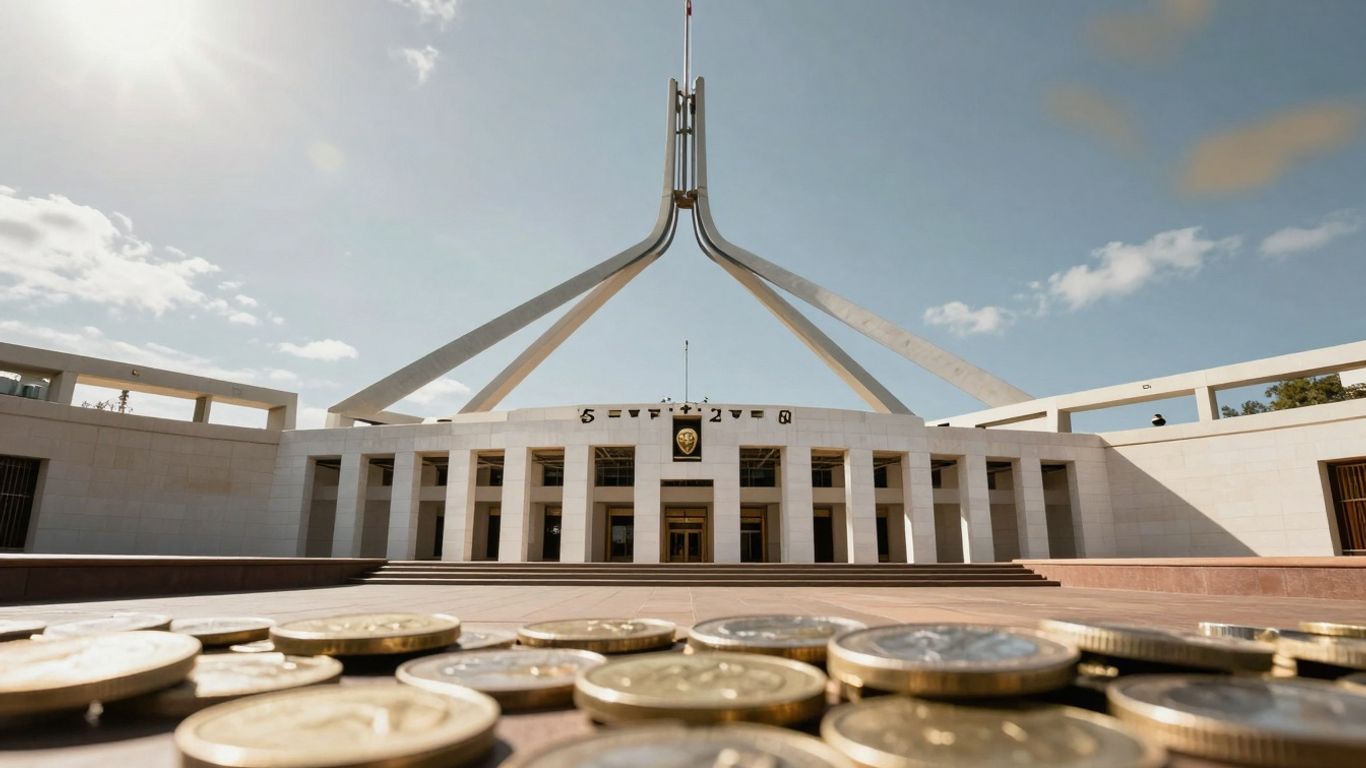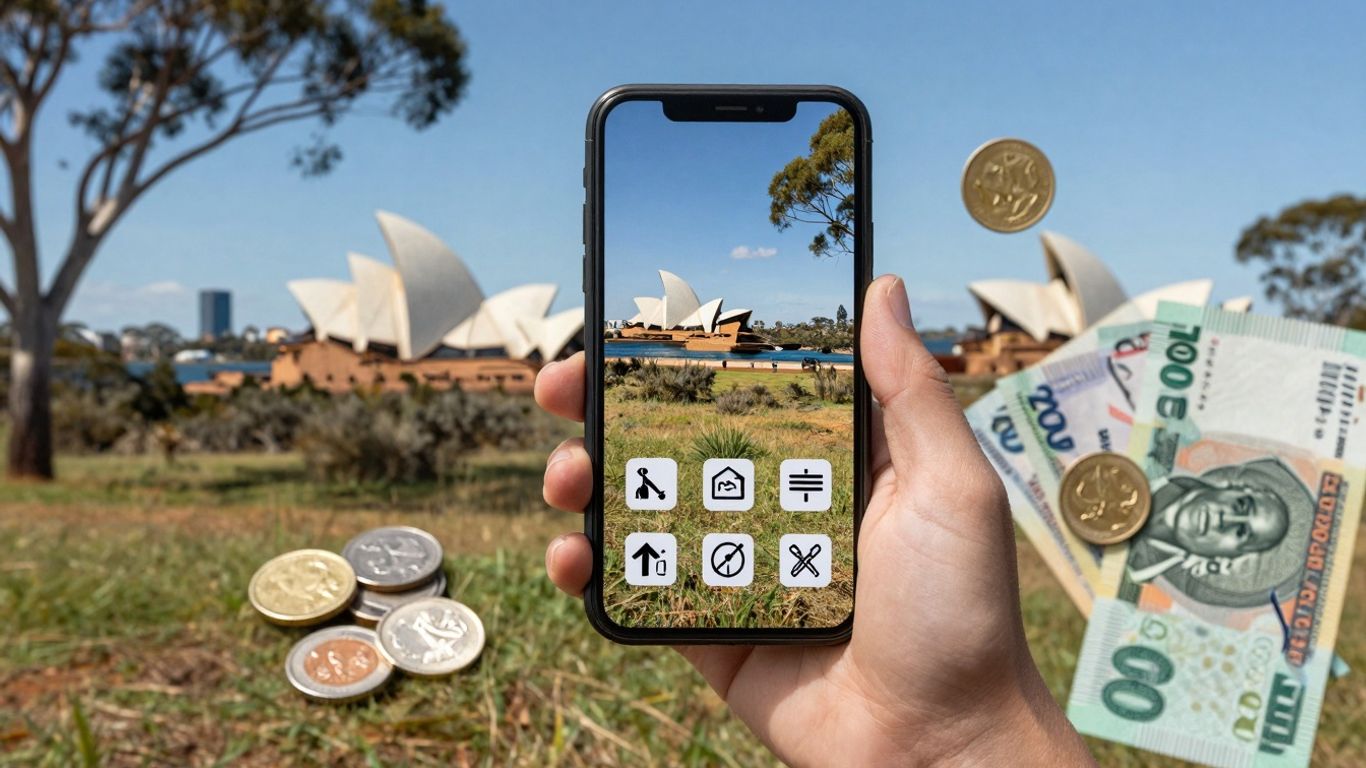Thinking about applying for funding through the HHS program in Australia? It’s a big deal, with lots of potential to help out communities and health services. But like anything involving money and government programs, there’s a lot to know. We’ll break down what you need to understand about the grants, how to actually get them, and importantly, how to steer clear of scammers who are always looking for an opportunity. This is all about making sure the help gets to where it’s supposed to go, safely and effectively.
Key Takeaways
- The HHS program in Australia offers various grant opportunities aimed at improving health services, especially in rural and underserved areas.
- Understanding the eligibility criteria and application processes is vital for a successful grant application.
- Be aware of common scams targeting grant applicants and recipients, including phishing and social engineering tactics.
- Implementing strong security measures, like multi-factor authentication, is crucial to protect sensitive information and financial data.
- Reporting suspicious activity and understanding the consequences of grant fraud helps maintain the integrity of the HHS program.
Understanding the HHS Program in Australia

Overview of HHS Grant Opportunities
The Health and Human Services (HHS) program in Australia, while a US-based department, has implications and funding streams that can impact Australian health initiatives, particularly those focused on research, innovation, and specific health challenges. It’s not a direct Australian government program, but rather a US federal agency whose grants can be accessed by eligible international entities, including those in Australia. These grants often aim to advance health and well-being on a global scale. Understanding the scope and intent of these opportunities is the first step for any Australian organisation looking to secure funding.
Eligibility and Application Processes
Securing HHS grants requires a thorough understanding of eligibility criteria, which can vary significantly depending on the specific grant program. Generally, applications are open to research institutions, non-profit organisations, and sometimes even government bodies. The application process itself is detailed and often competitive. It typically involves:
- Identifying relevant funding announcements: These are usually published on the HHS website and related agency portals.
- Reviewing guidelines and requirements: Pay close attention to eligibility, project scope, budget limitations, and submission deadlines.
- Developing a strong proposal: This needs to clearly articulate the project’s objectives, methodology, expected outcomes, and how it aligns with the grant’s goals.
- Submitting the application: This is usually done through an online portal, and requires careful attention to detail and adherence to formatting rules.
Key Program Objectives and Funding Areas
HHS funding is diverse, aiming to address a wide array of health issues. Common areas of focus include:
- Public Health: Initiatives related to disease prevention, health promotion, and addressing health disparities.
- Medical Research: Funding for studies into diseases, treatments, and health technologies.
- Rural and Underserved Communities: Programs designed to improve health access and outcomes for populations facing barriers to care.
- Health Infrastructure and Technology: Support for developing and implementing advanced health systems and digital health solutions.
It’s important to note that while the HHS is a US agency, its global reach means that Australian researchers and health organisations can be beneficiaries. However, the application process can be complex, and competition is often high. Thorough preparation and a clear understanding of the grant’s objectives are key to a successful application.
Navigating HHS Grant Benefits
So, you’ve managed to snag an HHS grant – congratulations! It’s not just about the money itself, though that’s obviously a big part of it. These grants are designed to make a real difference, especially for folks in places that don’t always get the attention they deserve. Think about communities out in the bush, or areas where healthcare services are a bit thin on the ground. This funding is specifically aimed at giving those places a leg up.
Support for Rural and Underserved Communities
This is a massive focus. The HHS understands that getting quality healthcare out to remote areas or to people who might be struggling financially is a real challenge. Grants can help fund things like mobile clinics, telehealth services to connect people with specialists from afar, or even just keeping local clinics open and running. It’s about making sure everyone, no matter where they live or their financial situation, has a fair shot at good health.
- Funding for local health centres to upgrade equipment.
- Programs to attract and keep healthcare professionals in rural areas.
- Initiatives to provide health education and preventative care to disadvantaged groups.
Investment in Health Infrastructure and Technology
Beyond just day-to-day services, HHS grants often look at the bigger picture. This means investing in the actual buildings and the tech that healthcare providers use. We’re talking about upgrading old hospitals, setting up better IT systems for managing patient records securely, or even getting the latest diagnostic tools. The goal is to build a stronger, more modern healthcare system that can handle whatever comes its way.
| Area of Investment | Examples of Use |
|---|---|
| Facility Upgrades | New wings, improved patient rooms, better accessibility |
| Technology | Electronic health records, telehealth platforms, AI tools |
| Equipment | Diagnostic machines, surgical tools, lab equipment |
Impact on Patient Care and Health Outcomes
Ultimately, all of this is about you and me – the patients. When rural communities get better support, when hospitals have the latest tech, it means better care. It can mean quicker diagnoses, more effective treatments, and a focus on keeping people healthy in the first place through preventative measures. It’s about improving the overall health of Australians, particularly those who have historically faced more barriers to accessing care. The ripple effect can be huge, leading to healthier families and stronger communities.
The money isn’t just a handout; it’s a strategic investment. It’s about building capacity, improving access, and making sure that the healthcare system works better for everyone, especially those who need it most. This can lead to fewer people needing emergency care because they’ve had better preventative services, and it means that when people do need help, the services available are top-notch.
Recognising and Avoiding Scams
It’s a real worry when you hear about people trying to scam others, especially when it involves programs meant to help communities. The HHS program in Australia, like any big initiative, can unfortunately attract scammers looking to take advantage. They might pose as official representatives or create fake opportunities to get your money or personal details. Staying alert is your best defence.
Common Scams Targeting Grant Recipients
Scammers are getting pretty creative, but a few tactics pop up regularly. They might send emails that look official, asking for ‘processing fees’ to release grant money that doesn’t actually exist. Others might call or email claiming you’ve been awarded a grant but need to provide bank details immediately to receive the funds. Sometimes, they’ll even create fake websites that mimic legitimate government portals.
Here are some common red flags to watch out for:
- Unsolicited contact: You receive an unexpected email, call, or message about a grant opportunity you didn’t apply for.
- Requests for upfront payment: You’re asked to pay a fee, tax, or processing charge before receiving any grant money.
- Pressure to act quickly: You’re told you must act immediately or risk losing the opportunity.
- Requests for sensitive personal information: You’re asked for bank account numbers, passwords, or other highly personal data via email or phone.
- Vague or unbelievable offers: The grant amount seems too good to be true, or the details are unclear.
Identifying Phishing and Social Engineering Tactics
Phishing is a big one. Scammers send fake emails or messages designed to trick you into clicking a malicious link or downloading an infected attachment. These often look very convincing, using official logos and language. Social engineering is the broader art of manipulating people into giving up confidential information. They might build trust over time, pretend to be someone they’re not, or create a sense of urgency.
Always remember that legitimate government programs will not ask you to pay fees to receive a grant. They also won’t typically ask for sensitive personal information via email or unsolicited calls. If something feels off, it probably is.
Protecting Sensitive Information and Financial Data
Your personal and financial data is gold to scammers. Be extremely cautious about who you share it with. Never give out your bank account details, credit card numbers, or passwords unless you are absolutely certain of the recipient’s legitimacy and the security of the communication channel. If you’re unsure about an email or a request, it’s always better to contact the organisation directly through their official website or a known phone number, rather than replying to the suspicious communication.
Security Measures for Grant Recipients

Right, so you’ve scored yourself an HHS grant – brilliant! But with that comes a bit of responsibility, especially when it comes to keeping everything secure. We’re talking about serious money here, and unfortunately, there are always folks looking to get their hands on it through dodgy means. So, let’s talk about how to keep your grant funds safe and sound.
Implementing Robust Cybersecurity Practices
Think of your digital security like locking your front door. You wouldn’t leave it wide open, right? The same applies to your online systems. This means making sure your computers and networks are up-to-date with the latest security patches. It’s also a good idea to have strong, unique passwords for everything, and maybe even a password manager to keep track of them all. Regular backups of your important data are also a lifesaver if something goes wrong.
Verifying Payment Systems and Transactions
This is where things can get a bit hairy. Scammers love to impersonate people or organisations to trick you into sending money to the wrong place. Always double-check payment requests, especially if they seem a bit out of the blue or for a large amount. If a supplier or partner suddenly changes their bank details, that’s a massive red flag. It’s better to be a bit slow and sure than fast and broke.
Here’s a quick checklist for verifying payments:
- Confirm the requestor’s identity: If you don’t recognise the email address or phone number, don’t just trust it.
- Verify bank details: If bank details change, call the person or organisation directly using a known, trusted phone number to confirm.
- Check transaction amounts: Be extra cautious with unusually large or frequent payments.
- Look for inconsistencies: Scammers might make small errors in company names or email addresses.
The Role of Multifactor Authentication
Multifactor Authentication, or MFA, is like having a second lock on your door. It means that even if someone gets your password, they still can’t get into your account without a second piece of proof. This could be a code sent to your phone, a fingerprint scan, or a special app. It’s one of the simplest yet most effective ways to stop unauthorised access. Make sure it’s turned on for all your important accounts, especially those linked to your grant funds.
Protecting your grant money isn’t just about following rules; it’s about safeguarding the vital work your organisation does. When funds are diverted or lost to scams, it directly impacts the communities and individuals you’re trying to help. Staying vigilant and implementing strong security measures is a core part of your responsibility as a grant recipient.
HHS Program Integrity and Oversight
Keeping the integrity of the HHS program in Australia is super important, especially when millions of dollars are involved. It’s not just about getting the grants out; it’s about making sure they go to the right people and are used for their intended purpose. Unfortunately, where there’s money, there are often people trying to get it through dodgy means. We’ve seen reports of hackers stealing millions from HHS payment systems, often using sneaky tactics like spear-phishing. This stuff can really delay much-needed funds from reaching organisations that support vulnerable communities, like those in rural areas or people with specific health needs.
Reporting Suspicious Activity
If you think something’s not quite right with a grant application, payment, or communication, it’s your responsibility to speak up. Don’t just ignore it. Reporting suspicious activity helps protect the program and other potential recipients. Here’s what you can do:
- Don’t reply directly to suspicious emails: Especially if they ask for personal or financial details. Instead, forward the email to the official HHS fraud reporting channel.
- Document everything: Keep records of all communications, especially those that seem off. This includes dates, times, sender details, and the content of the message.
- Contact the official HHS program office: If you have doubts about a request or communication, reach out to the program directly using contact information you’ve verified from their official website, not from the suspicious email itself.
The Office of Inspector General’s Role
The HHS Office of Inspector General (OIG) is basically the watchdog for the department. Their job is to investigate fraud, waste, and abuse related to HHS programs. They look into everything from grant fraud to misuse of funds. They are a key part of keeping the program honest and accountable. When incidents occur, like the reported theft of grant money, the OIG is usually brought in to investigate. They can’t always confirm if an investigation is happening, but their presence signals a serious commitment to program integrity.
Consequences of Grant Fraud
Getting caught committing grant fraud isn’t just a slap on the wrist. The consequences can be pretty severe. For individuals, this could mean hefty fines, being banned from receiving future grants, and even criminal charges leading to jail time. For organisations, it can mean losing their funding, reputational damage that’s hard to recover from, and legal battles. It’s a serious business, and the risks far outweigh any perceived short-term gain. Remember, Australians are facing a significant scam crisis, with losses exceeding $2 billion in 2024, so staying vigilant is key to avoiding becoming a victim or perpetrator of fraud Australians are facing a significant scam crisis.
Scammers are getting smarter, using sophisticated methods like AI-augmented phishing to trick people. It’s vital to remember that no one is immune, and even government agencies can be targeted. This highlights the need for robust security measures at every level, from individual recipients to the program administrators themselves.
Future of HHS Funding in Australia
Evolving Threats and Security Solutions
The landscape of healthcare funding, especially for vital programs like those managed by HHS, is always shifting. We’re seeing new challenges pop up, particularly around digital security. Think about it – as more money flows through online systems, the scammers get smarter too. They’re not just sending dodgy emails anymore; they’re using more sophisticated tricks to get at grant money. Staying ahead of these evolving threats means we need to constantly update our security measures. This isn’t a one-and-done thing; it’s an ongoing effort to keep the funds safe and reaching the people who genuinely need them.
Sustaining Rural Healthcare Initiatives
One of the big pushes with HHS funding is to give a leg up to rural and underserved communities. This is super important because these areas often struggle with access to healthcare. The grants aim to build up infrastructure, bring in new technology, and generally improve the quality of care. But the real test is making sure this support lasts. It’s not just about a cash injection; it’s about creating systems that can keep going long after the initial funding runs out. This means focusing on sustainable models, not just quick fixes.
Collaborative Approaches to Grant Management
Looking ahead, it’s clear that working together is going to be key. No single organisation can tackle all the challenges alone. We’re talking about different levels of government, healthcare providers, tech experts, and even community groups all needing to be on the same page. This collaboration helps share the load, pool resources, and come up with smarter solutions. It also means being more transparent and open about how grants are managed and how the money is being used. When everyone’s working in sync, it makes the whole system more robust and less of a target for those looking to exploit it.
Wrapping Up: Staying Safe with HHS Programs
So, there you have it. The HHS programs in Australia can be a real help, whether you’re looking for grants or other support. But like we’ve seen, it’s not all smooth sailing. Scammers are out there, trying to get their hands on money meant for good causes, and they’re getting pretty clever about it. It’s super important to do your homework, double-check everything, and never give out personal or financial details unless you’re absolutely sure who you’re dealing with. If something feels off, it probably is. Stay alert, stay informed, and keep those dodgy characters away from your hard-earned cash or the funds you’re entitled to.
Frequently Asked Questions
What kind of help does the HHS program offer in Australia?
The HHS program in Australia aims to provide funding and support for health-related projects. This can include things like improving health services in country areas, upgrading medical technology, and making healthcare better for everyone, especially those who don’t have easy access to it.
Who can get grants from the HHS program?
Generally, grants are available to organisations and groups working in the health sector. This might include hospitals, community health centres, research institutions, and non-profits. There are specific rules about who is eligible, so it’s important to check the program’s guidelines carefully.
How do I apply for an HHS grant?
Applying usually involves filling out an application form and providing details about your project, why it’s needed, and how the money will be used. You’ll need to meet certain criteria, and the application process can be quite detailed. Keep an eye on the official HHS website for application periods and specific instructions.
What are some common scams related to these grants?
Scammers might pretend to be from HHS and ask for money upfront to get a grant, or they might try to trick you into giving them your bank details or personal information. They sometimes send fake emails that look real, asking you to click on links or download files. Sadly, some people have lost a lot of money this way.
How can I protect myself from grant scams?
Always be suspicious of anyone asking for money to secure a grant. Official government grants don’t work like that. Double-check the sender’s email address and never click on suspicious links. If you’re unsure, contact the HHS directly through their official contact details, not through the email you received.
What happens if I suspect a scam?
If you think you’ve encountered a scam or fraudulent activity related to HHS grants, it’s crucial to report it. You can usually report this to the HHS Office of Inspector General or the Australian Cyber Security Centre. Reporting helps protect others and authorities can investigate.





